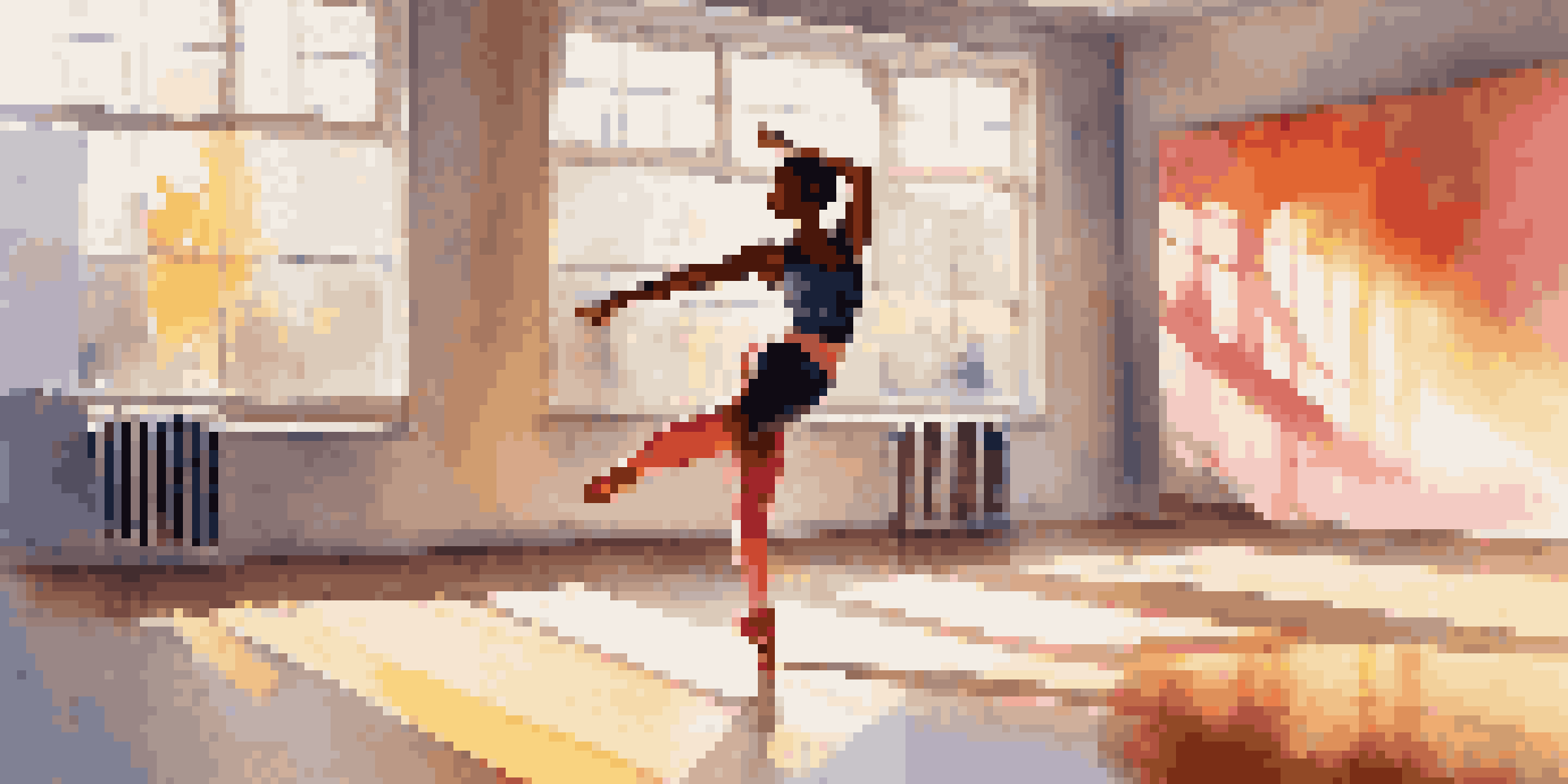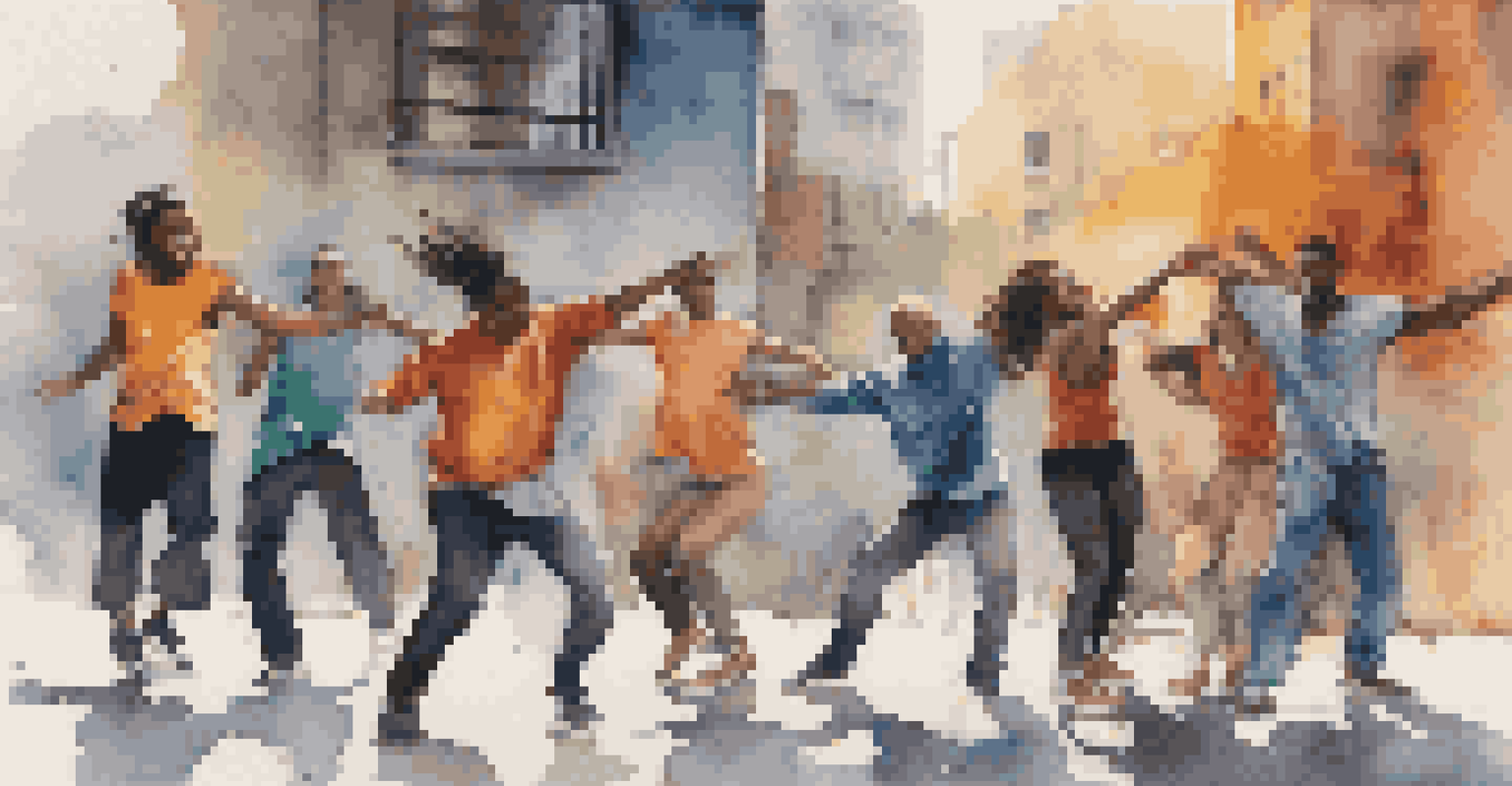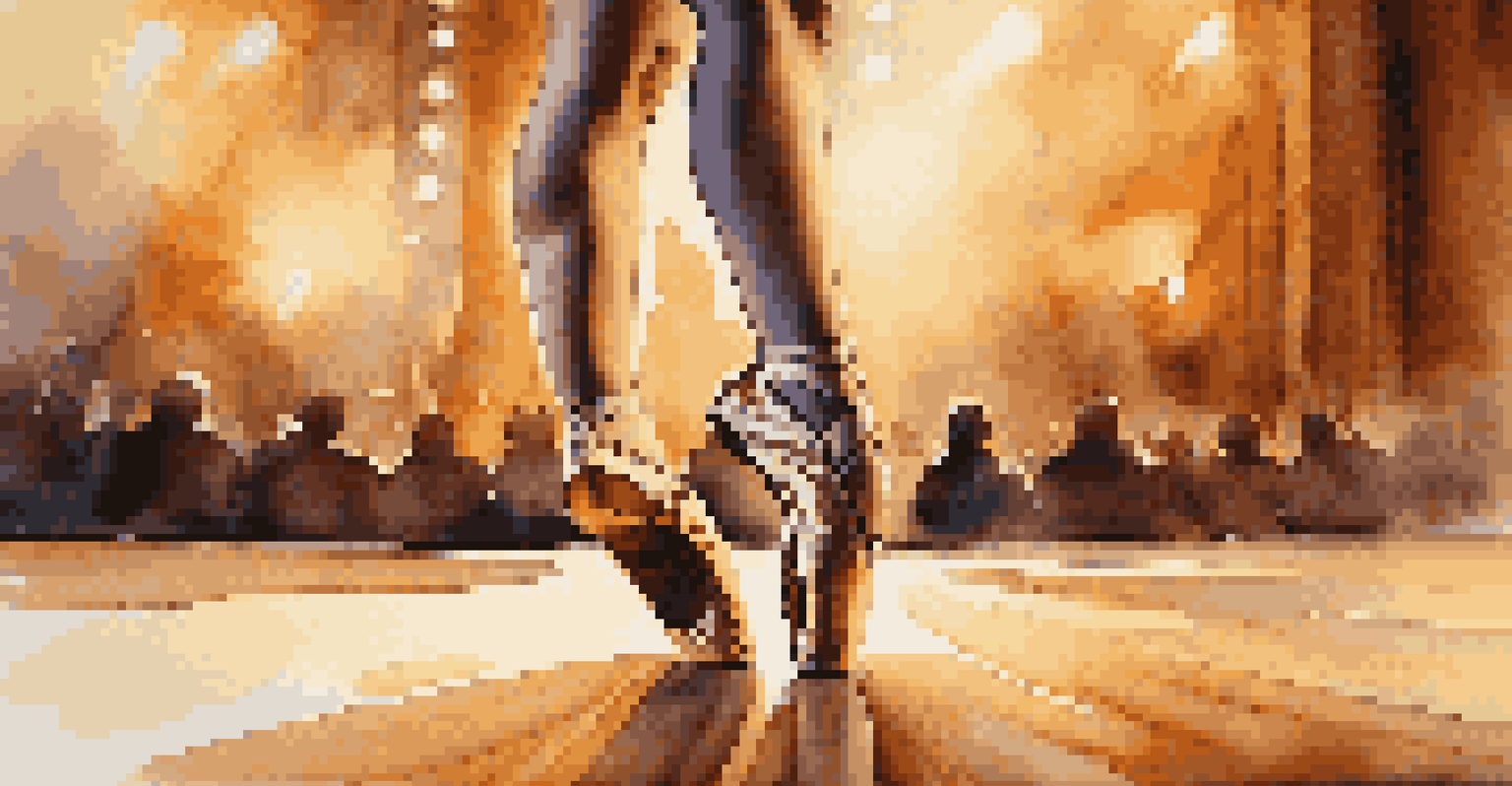Improvisation Techniques for Enhancing Dance Competitions

Understanding the Role of Improvisation in Dance
Improvisation in dance is the art of creating movement spontaneously. It allows dancers to express themselves freely and connect with the music on a deeper level. By embracing improvisation, dancers can enhance their creativity and bring a unique flair to their performances.
Dance is the hidden language of the soul.
Think of improvisation as a conversation with the music; just as you would respond naturally to a friend, you react to rhythm and melody. This interaction can lead to unexpected moments that captivate judges and audiences alike. The ability to improvise can set a dancer apart in a competitive environment.
Moreover, improvisation helps dancers develop a strong sense of timing and spatial awareness. Practicing improvisation can improve a dancer's ability to adapt to different styles and genres, making them versatile performers who can shine in any competition.
Warm-Up Exercises for Improvisational Skills
Before diving into improvisation, warming up is crucial to prepare both the body and mind. Simple exercises like stretching and basic movements can help dancers feel more connected to their physicality. This connection is essential for fluid improvisation.

Incorporating free movement into warm-ups can also stimulate creativity. For example, dancers can explore various ways of moving their bodies to a piece of music, allowing them to discover new patterns and gestures. This playful approach can lead to exciting improvisational ideas.
Improvisation Enhances Dance Creativity
Improvisation allows dancers to express themselves freely, connect with music, and create captivating moments that can set them apart in competitions.
Another effective warm-up technique is to use prompts or themes. Dancers might select a word or emotion and explore movements that embody that concept. This practice not only warms up the body but also invites inspiration for future routines.
Exploring Different Dance Styles for Inspiration
One of the best ways to enhance improvisation is by exploring various dance styles. Each genre has its unique movements and rhythms, which can broaden a dancer's vocabulary. For instance, incorporating elements from ballet, hip-hop, or contemporary can create a rich tapestry of expression.
Improvisation is the ability to create something out of nothing.
Watching performances from different styles can also spark new ideas. Dancers can take notes on what resonates with them and apply those concepts to their improvisation. This cross-pollination of styles helps develop a distinctive personal style that can impress judges.
Moreover, attending workshops or classes in unfamiliar styles encourages dancers to step outside of their comfort zones. By pushing their boundaries, they not only gain new skills but also enhance their ability to improvise across different contexts.
Using Music as a Tool for Improvisation
Music is the heartbeat of dance, and it plays a pivotal role in improvisation. Dancers should select songs that inspire them and encourage spontaneous movement. The right track can evoke emotions and ideas that translate into unique choreography.
Experimenting with different genres of music can also expand a dancer's improvisational range. For instance, switching from classical to electronic music can inspire entirely different movements and interpretations. This versatility can be particularly advantageous in dance competitions.
Warm-Ups Cultivate Movement Connection
Effective warm-up exercises, including free movement and thematic prompts, help dancers prepare physically and mentally for improvisation.
Additionally, dancers should practice improvising with live music when possible. The unpredictability of a live performance encourages quick thinking and adaptability, crucial skills for any competitive dancer. Engaging with musicians can lead to a dynamic exchange that enhances the overall experience.
Mindfulness Techniques to Enhance Performance
Mindfulness plays a significant role in allowing dancers to be present in the moment. Techniques such as deep breathing and visualization can help calm pre-competition nerves and improve focus. By centering themselves, dancers can tap into their creative instincts more effectively.
One helpful practice is to visualize the performance before stepping on stage. Envisioning success can boost confidence and reduce anxiety, enabling dancers to improvise more freely during their routines. This mental preparation can make a substantial difference in performance quality.
Incorporating mindfulness meditation into a dancer's routine can also foster a more intuitive approach to movement. Being in tune with one’s body and emotions allows for more authentic expression, which can resonate deeply with audiences and judges alike.
Building Confidence Through Improvisational Practice
Confidence is key in dance competitions, and improvisation can be a powerful tool for building it. Regularly practicing improvisational techniques helps dancers become more comfortable with their own movements. This comfort translates into more self-assurance when performing in front of an audience.
Engaging in group improvisation sessions can also boost confidence. Dancing with peers encourages an atmosphere of support, where mistakes are part of the learning process. This collaborative environment fosters growth and allows dancers to experiment without fear.
Feedback Fuels Improvisational Growth
Seeking constructive feedback and engaging in self-assessment are crucial for dancers to enhance their improvisational skills and build confidence.
Furthermore, recording and reviewing improvisational sessions can provide valuable insights. Dancers can identify strengths and areas for improvement, reinforcing their skills over time. This process helps cultivate a positive self-image and a readiness to take risks on stage.
The Importance of Feedback in Improvisation
Feedback is an essential component of enhancing improvisational skills. Dancers should seek constructive criticism from instructors, peers, or mentors after performances or practice sessions. This external perspective can highlight areas for growth and inspire new ideas.
In addition to verbal feedback, watching recordings of one’s performances can offer valuable insights. Dancers can observe their movements and identify what worked well or what could be improved. This self-assessment is crucial for continuous development.

Creating a feedback loop, where dancers regularly exchange insights with one another, fosters a supportive community. This collaboration not only enhances individual skills but also nurtures a collective creativity that can elevate the entire dance team.